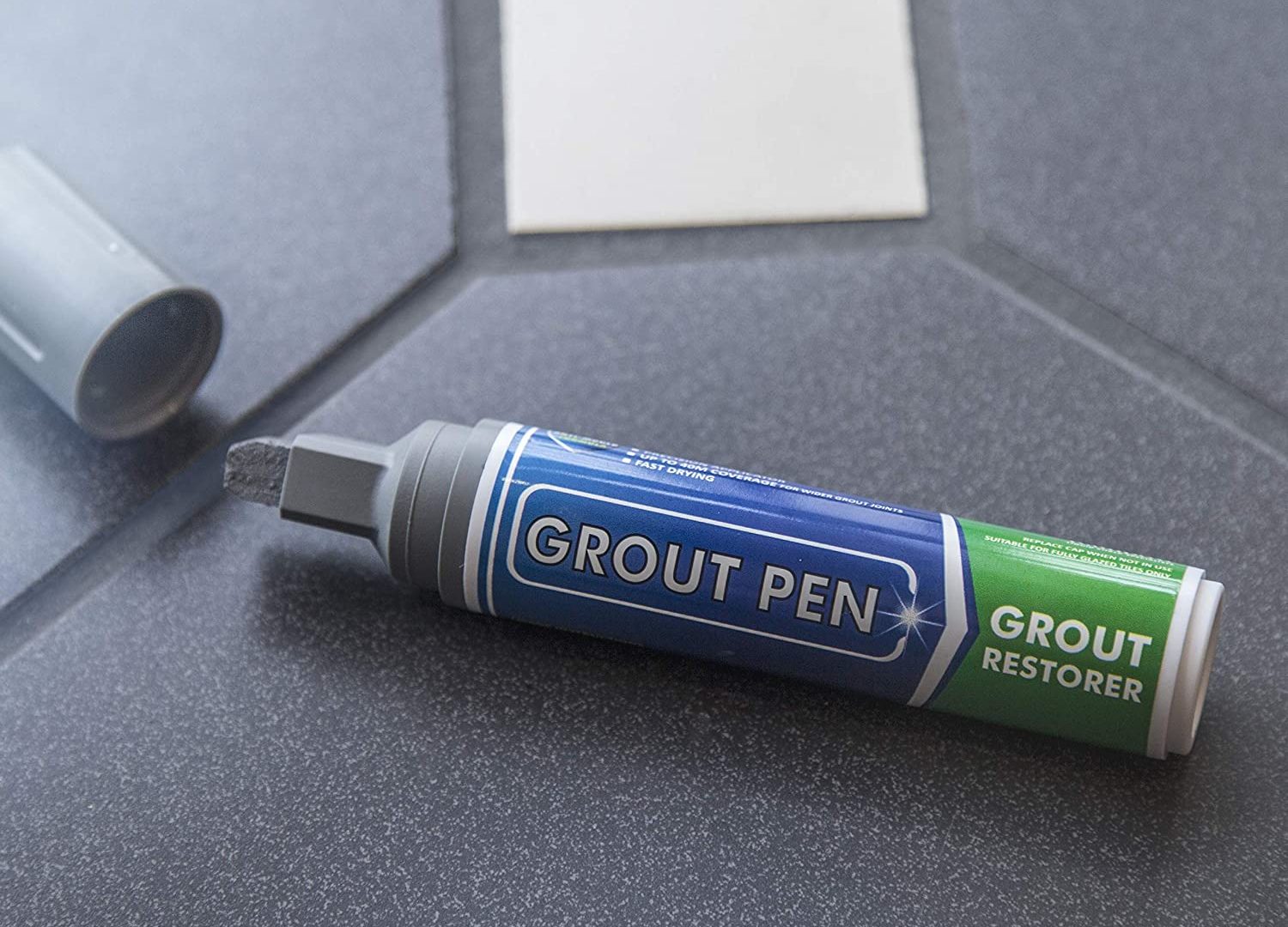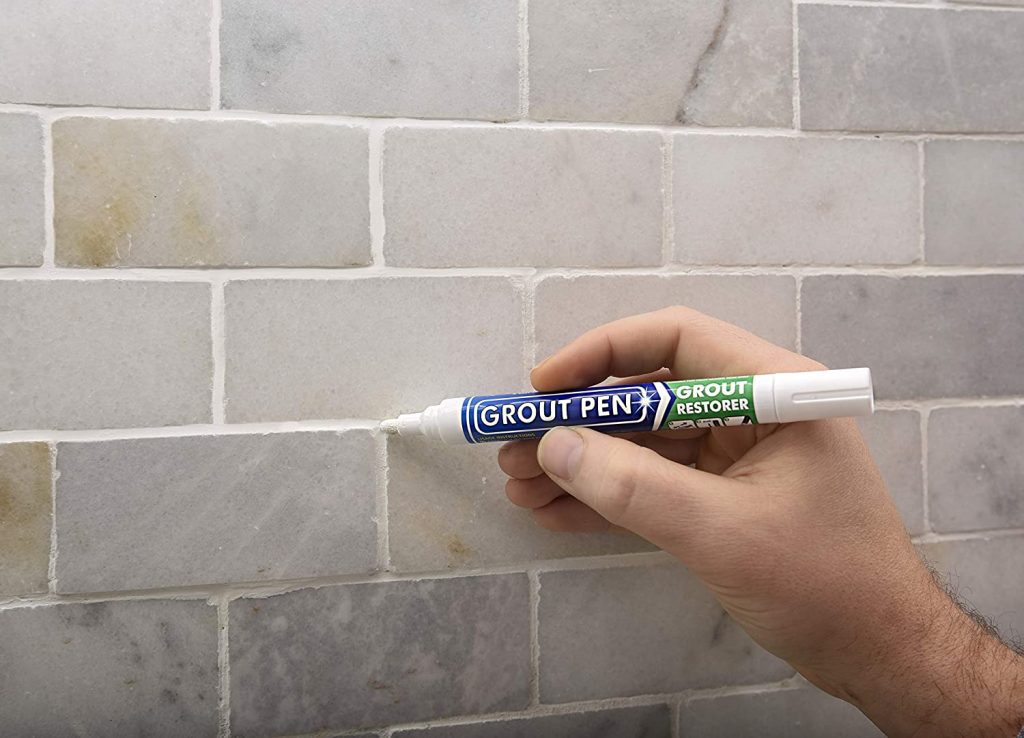
How Often Should You Refresh Your Grout With A Grout Pen?
Grout pens are an incredibly handy tool in every homeowner’s arsenal. They work wonders in rejuvenating discoloured or stained grout, bringing back a clean, fresh look to your bathroom, kitchen, or other tiled areas. Although grout pens are easy to use and durable, the results they offer are not completely permanent, which brings up the question of “how often should you refresh your grout with a grout pen?”
Let’s consider factors like:
- the moisture levels in your area
- mould growth
- water hardness
- the specific area’s usage frequency
- and more!
Grout Pen Refreshing: How Often Should You Refresh?
As a starting point, it’s essential to know that the frequency of refreshing your grout with a grout pen is highly contingent upon various factors.
One crucial factor is the moisture levels in your area, particularly for bathrooms. High moisture content increases the likelihood of mould growth, which can rapidly discolour your grout, necessitating more frequent refreshing.
Similarly, if you have hard water, which is rich in minerals, it could lead to staining, discolouring your once-bright white grout, and again requiring more regular refreshing.
Another determining factor is how often the area is being used. For instance, a bathroom or kitchen floor, which receives a lot of foot traffic, is bound to need more frequent touch-ups compared to a seldom-used guest bathroom.
Typically, most customers find that refreshing their grout with a grout pen once a year suits their needs. Showers and floors will require more frequent touch-ups compared to tiled walls and kitchen splashbacks.
Still, it’s worth noting that this frequency can fluctuate, depending on your unique situation.
Although our anti-fungal Grout Pen formula aims to prevent mould regrowth, it is most effective against minor cases and should be used in conjunction with mould-fighting products. No amount of mould products can resolve a highly humid and poorly ventilated environment!
Complete Re-grouts vs Grout Pen Touch-Ups
However, just because a particular area may need refreshing doesn’t mean that the entire grout needs to be redone. Often, you may only need to cover small areas and patches where the grout has discoloured or where staining is most prominent.
Refreshing these targeted areas can significantly extend the lifespan of your grout pen and still give your tiled areas a fresh and clean appearance.
For this reason, we always recommend ordering 1x more grout pen than you need for your project, so you have a spare ready for touch ups! Our 2 and 3 packs are perfect for this.

Grout Pens 5mm Twin Pack
Colour: White
How To Refresh Your Existing Grout Pen Job
Refreshing your grout with a grout pen follows the same steps as the initial application, whether you are touching up small areas or changing the colour of your grout. Here are the steps to follow:
1. Ensure the area is dry: Dryness is key to allowing the grout pen to adhere properly. So, before applying, make sure the area is thoroughly dry. This step might require you to wait for some hours, or even a day, after the last exposure to moisture, such as showering or cleaning.
2. Clean the grout: Before applying the grout pen, clean the grout lines to ensure that they’re free of any dirt, mould, or soap scum. You can use a grout cleaner or a simple solution of vinegar and water for this.
3. Shake the grout pen: Before you start, shake your grout pen well. This action will ensure that the solution is well-mixed and ready for application.
4. Prime the grout pen: Press the nib of the pen on a piece of paper until the paint starts to flow out.
5. Apply the grout pen: Now, simply run the pen along your grout lines. Be sure to apply even pressure and maintain a steady hand for a uniform application.
6. Let it dry: Allow the grout pen to dry thoroughly before exposing the area to moisture.
The Positive Environmental Impact of Grout Pens
While discussing grout pens, it’s also worthwhile to consider their environmental impact. Typically, grout pens are low in Volatile Organic Compounds (VOCs), making them a relatively environmentally-friendly option compared to traditional grout whitening methods. This feature means using grout pens can reduce harmful emissions in your home, contributing to healthier indoor air quality for you and your family.
Moreover, as grout pens can extend the life of your grout and tiles, they indirectly reduce waste. Rather than resorting to replacing old or discoloured tiles, which contribute to landfill waste, refreshing your grout can give them a new lease of life. Thus, grout pens are a fantastic tool in a sustainable home maintenance routine!
Click the button below to explore our grout restoring products!

Grout Pen
Our best-selling Grout Pens revive tired, grubby grout and return your tiles to their former glory. The easiest, no-mess grout cleaner, available in a variety of colours, nib shapes and sizes. Draw your way to sparkling, mould-repellant grout with Rainbow!
Available in single pen, double and triple pen packs.